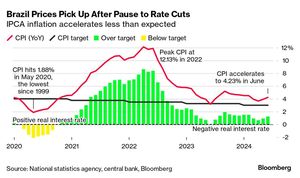India is making significant strides toward its renewable energy future with the recent signing of two major agreements aimed at boosting large-scale energy storage capabilities. The Ministry of New and Renewable Energy (MNRE) through the Solar Energy Corporation of India (SECI) has inked a memorandum of understand (MoU) for the development of groundbreaking projects, including one for 200 megawatts (MW) of solar energy complemented by 1000 megawatt-hours (MWh) of battery storage. This ambitious MoU was signed by Shri Sivakumar V Vepakomma, Director of Power Systems at SECI, and Shri Manu Srivastava, Additional Chief Secretary for New and Renewable Energy (NRE) of Madhya Pradesh, during a ceremony attended by key officials including Shri Rakesh Shukla, Minister of New & Renewable Energy for Madhya Pradesh, and Shri R P Gupta, Chairman and Managing Director of SECI.
"SECI will supply renewable electricity to the state, supporting its clean energy transition goals," stated the SECI representative, underlining the initiative's significance for promoting sustainable energy practices.
This 200 MW solar project is part of a larger 500 MW agreement established earlier this year with the Madhya Pradesh Power Management Company Limited (MPPMCL), set against the backdrop of India's growing commitment to clean energy practices. The MoU reflects SECI's ambitious strategy to bolster renewable energy resources and stands as testimony to India's broader clean energy transition strategy, which aims at achieving 500 GW of non-fossil fuel-based capacity by 2030.
SECI's capital investment for this project is projected at ₹2500 crore, indicating substantial financial backing for renewable energy expansion. This initiative was prominently featured at the recently concluded Global Investors Summit 2025, which was inaugurated by Prime Minister Narendra Modi and showcased participation from various stakeholders, including Madhya Pradesh Governor Shri Mangubhai Chhaganbhai Patel and Chief Minister Shri Mohan Yadav.
On another front, the NTPC Vidyut Vyapar Nigam Limited (NVVN), a subsidiary of NTPC Limited, has issued its own Request for Selection (RfS) for the establishment of 250 MW/1000 MWh standalone Battery Energy Storage Systems (BESS) across India. This competitive bidding process, aimed at nurturing India’s renewable energy goals, introduces various opportunities for developers interested in contributing to the nation’s energy grid.
The NVVN project seeks to ease the integration of renewable energies by allowing for the storage of excess generation during low-demand periods. "The project aims to support India’s renewable energy goals and will be implemented with Viability Gap Funding (VGF)," stated the NVVN spokesperson, highlighting the financial incentives attached to this initiative.
Under this RfS, developers will sign Battery Energy Discharge Purchase Agreements (BEDPA) with NVVN, ensuring the sale of stored energy at peak times, effectively balancing supply with demand. Bidders must adhere to stringent requirements, including submitting bank guarantees and performance bank guarantees, to qualify for consideration under the scheme.
Participation fees for the bidding process are set at ₹22,500 for document access, coupled with a bid processing fee of ₹15 lakh plus 18% GST, affirming the serious financial commitments required of bidders. Interested developers must also put forth variable project sizes; the minimum allowable size is 50 MW/200 MWh, proceeding to the maximum of 125 MW/500 MWh, suitable for India’s diverse market approaches.
Providing the flexibility necessary for enhancing renewable energy integration, this initiative mandates projects to be set under the Build, Own, and Operate (BOO) model. This requires developers to navigate necessary approvals and establish connections with the Inter-State Transmission System (ISTS), keeping operational concerns firmly on their shoulders.
Compliance with the Central Electricity Authority (CEA) and the Central Electricity Regulatory Commission (CERC) regulations will also be overseen as part of this initiative, ensuring all energy storage projects meet required standards for safety and efficiency. For the scheduled commissioning, projects up to 250 MW must reach completion within 18 months from the effective date of their BEDPA agreements, or face penalties, including the potential encashment of performance guarantees.
The Viability Gap Funding structure, amounting to ₹27 lakh per MWh or 30% of the project’s capital cost, whichever is lower, will be distributed across multiple delivery stages. Developers will receive upfront support, then phased funding based on achieving commercial operation milestones.
NVVN’s strategic goal with this initiative is to significantly improve grid stability and energy security, empowering India to respond effectively to energy demand fluctuations through enhanced operational flexibility. Prospective developers must also arrange for charging power, preferably sourced from renewable installations, showcasing the commitment to sustainability throughout the project lifecycle.
The developments surrounding SECI and NVVN mark progressive steps toward India's mission for energy sustainability, highlighting how large-scale energy storage projects are central to the clean energy transition. Both initiatives serve to underline the potential of renewable resources and their ability to alleviate pressure on traditional energy sources as the nation looks toward achieving greater energy resilience and independence.



